Common Sensors Found in Cars
These sensors help to maintain and monitor our vehicles letting us know if there are issues or instigating changes in the car to deal with specific road conditions or problems that may arise.
In this article we are going to look at a few of these sensors to explain more about them. We will include some of the more commonly used to help you understand more about how this all works.
Engine Oil Level Sensor
This is an important sensor as it gives us a digital warning that in older cars would require opening the hood and using the dipstick. It is one of the most common sensors in your vehicle's engine and as the name suggests it monitors the level of your oil.
Engine oil is of course essentially the life blood of your motor and if there is not enough in the system it can lead to issues. Used to lubricate your engine parts, low engine oil can cause moving parts of the engine to grind together rather than slide smoothly.
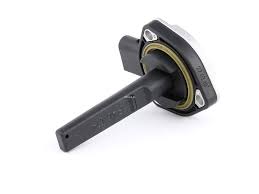
If this sensor detects that your oil level is low it will register a warning with the car's Electronic Control Module (ECM). This will trigger a low oil warning on your dashboard alerting you that you may need more oil in the engine and possibly that you have an oil leak.
You will find this specific sensor at the bottom of your oil pan. Due to its location in order to replace this part you would first have to drain the engine oil to be able to access it.
Boost Pressure Sensor
This sensor is not found in all cars but you will have one in vehicles that have a turbo or supercharger connected to the engine. It measures the boost pressure in the intake boost pipes which is important in the correct running of your turbo or supercharger.
Using the pressure readings that this sensor collects the ECM is able to determine not only the correct amount of fuel to use but also the optimal ignition timing and operation of the turbocharger wastegate.
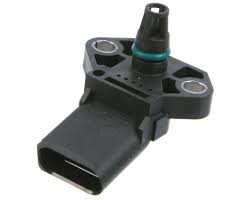
These are often an inexpensive part and can be replaced very easily on most vehicles. There are however some models in which the boost pressure sensor is harder to access as it may be located on the intake manifold.
Engine Oil pressure Sensor
This is another sensor that helps with the regulation of your engine oil and in many ways is similar to the oil level sensor. Rather than tracking the oil level though it instead monitors the pressure of the oil after it exits the oil pump.
As mentioned if oil is the blood of the car then the fuel pump is the heart pushing it around the engine. If the oil does not circulate around the engine efficiently you can again suffer issues with poor lubrication of engine parts and potential damage to those parts as they grind against others.
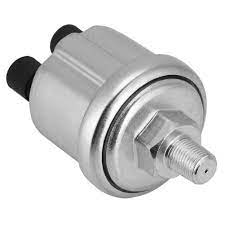
This sensor has some plastic components that can easily crack with age which can lead to oil leaks. This sensor is usually found on the engine block near to the fuel filter and when it starts to go bad you will see a red oil pressure light warning.
Seeing a warning may mean that the sensor needs to be replaced but it could also indicate an issue with the oil pressure. Make sure you check for any oil pressure issues before you assume that the sensor is the sole issue.
Exhaust Temperature Sensor
This is a diesel specific sensor of which there will usually be multiple on your vehicle. Ranging between 1 – 4 sensors, the exhaust temperature sensor measures the temperature of your vehicle's exhaust gasses before and after they pass through the particle filter.
The intention of this sensor is to help optimize the particle filters regeneration. For those unsure of the particle filter's job it is similar to a catalytic converter but instead of converting gases it simply catches particles of soot released by the burning of the diesel fuel.
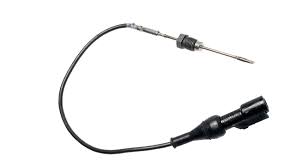
If this filter becomes clogged with soot then the engine exhaust does not pass through as well as it should. You will find these on the exhaust pipe, exhaust manifold and sometimes on the turbocharger. They are often hard to access and can be expensive to replace.
Coolant Temperature Sensors
Internal combustion engines are powered by small explosions contained within cylinders that create rotation of the crankshaft and the engine. This process of igniting fuel and oxygen creates a lot of heat which needs to be cooled or it can damage the engine.
The coolant system runs throughout the engine leaching out the excess heat and helping to dissipate it out into the air. It is probably now obvious what a coolant temperature sensor is. When the system is working correctly the temperature should be in a certain range.
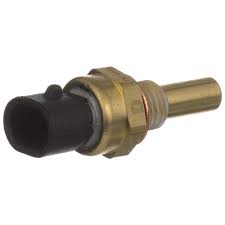
When the coolant gets too hot it can no longer cool the engine and the engine can overheat and become damaged. In some newer models this sensor can actually shut down your vehicle if the coolant becomes too hot to prevent you from doing damage to the engine.
NOx Sensor
This is a more brand specific sensor found commonly in Volkswagen, AUDI, SEAT and SKODA vehicles. All of these brands of course are owned by the Volkswagen Group so it makes sense that this technology spans the ranges.
The NOx sensor is usually fitted on the exhaust pipe of diesel vehicles and measures the output of NOx gas. When this sensor is fitted there will be a urea injection system which helps decrease the NOx gases. The sensor helps determine how much to inject to clean the exhaust fumes.
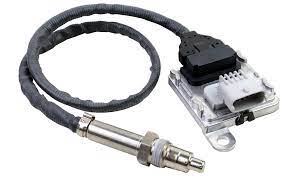
This is a costly sensor ro replace because you often have to replace the control unit as well. It also has a tendency to rust and become stuck in place so can be a tricky replacement in general.
Mass Airflow Sensor
The ignition process of your engine relies on a certain amount of fuel being mixed with the right amount of air and then both being ignited by a spark. Too much or not enough air in the mix with the fuel can make for a lean or rich mixture respectively. Either situation will likely cause cylinder misfires which is not good for the engine.
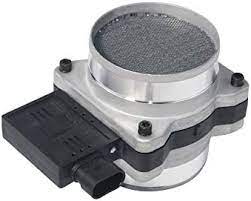
The mass airflow sensor measures how much air is entering your engine so it can make sure the correct amount of fuel is supplied. Also referred to as an MAF sensor it is usually found on the intake hose between the manifold and the air filter box.
Intake Air Temperature Sensor
This sensor may be a stand alone unit or it could be integrated into the MAF sensor. Not only the volume of air is important in the combustion process but also the temperature of the air can make a difference.
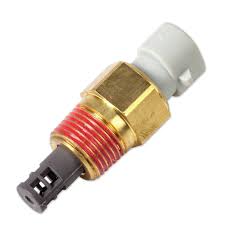
The information from the intake air temperature sensor will tell the ECM how much fuel to release to ensure the best engine performance. In most common models you will find this as part of the MAF.
Oxygen Sensors
These are not the same as the air intake sensors as they are part of the exhaust system. Located before and after the catalytic converter these sensors measure the O2 levels of the exhaust before it passes through and after it exits this part.
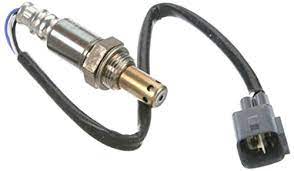
If the emissions do not drop as expected then you will receive a check engine light to tell you that the catalytic converter may not be working to optimum levels.
Coolant Level Sensor
As important as the temperature of coolant is, so too is the amount of coolant in the system. Coolant leaks are common issues so if your coolant levels drop too low then your engine will not be being cooled efficiently and may overheat.
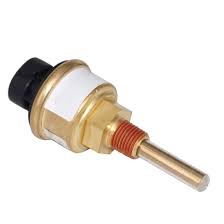
If the coolant level in your system is too low you will get a check engine light and the appropriate error code will be logged in your ECM. You will find this sensor unsurprisingly on the coolant reservoir which you can often see visibly when you open the hood.
Fuel Pressure Sensor
In order for our engines to run we must have a constant supply of fuel to the cylinders. This involves fuel pumps and if the pressure is too low in the system the fuel flow can be slowed. As a result you could experience anything from misfires to a refusal of the engine to start.

This sensor will warn you if there are issues with the fuel pressure allowing you to get the problem fixed quickly before it worsens. It is a cheap but somewhat tricky part to replace and will be located on the fuel pressure rail.
Manifold Absolute Pressure Sensor
Also known as an MAP sensor it goes a step further than your mass airflow sensor by measuring the amount of air that actually makes it into your engine. It is very critical to fuel injected engines and helps to further enhance the fuel/air mixture and improve performance.

This sensor can also do the same job as a boost pressure sensor measuring the turbo pressure in a turbocharged engine.
Knock Sensors
This enigmatically named sensor has an important job in that it detects explosions in the engine that should not be occurring. You are supposed to have frequent well timed explosions contained within the engines cylinders.

The knock sensor can detect cylinder misfires and explosions that happen outside of the cylinders. These can happen and if they do then they may be doing damage to the engine itself.
Crankshaft/Camshaft Position Sensors
The engine should run as smoothly as the proverbial well oiled machine. It is a symphony of timing between the pistons, camshaft and crankshaft. This particular sensor lets the ECM know what position both of the shafts are in at all times.

If the camshaft and crankshaft are not aligned correctly then the engine does not run as it should. There will always be a camshaft sensor but not always one on the crankshaft.
Throttle Position Sensor
In older cars the accelerator pedal and the throttle body wire connected by a cable but in modern cars this is mainly an electrical connection. This means it requires a sensor to measure the angle of the throttle flap.

This sensor can warn you if the flap gets stuck open and thus prevent you from dumping excess fuel into the engine potentially causing damage.
Conclusion
There are far more sensors involved in modern day vehicles than those above and some brands have their own specific sensors for their unique technologies. The list in this article mentions some of the more common and important ones which are more universal across most brands.
Link To or Reference This Page
We spend a lot of time collecting, cleaning, merging, and formatting the data that is shown on the site to be as useful to you as possible.
If you found the data or information on this page useful in your research, please use the tool below to properly cite or reference Tow Ratings as the source. We appreciate your support!
-
<a href="http://towratings.net/blog/common-sensors-found-in-cars/">Common Sensors Found in Cars</a>
-
"Common Sensors Found in Cars". Tow Ratings. Accessed on April 20, 2024. http://towratings.net/blog/common-sensors-found-in-cars/.
-
"Common Sensors Found in Cars". Tow Ratings, http://towratings.net/blog/common-sensors-found-in-cars/. Accessed 20 April, 2024
-
Common Sensors Found in Cars. Tow Ratings. Retrieved from http://towratings.net/blog/common-sensors-found-in-cars/.